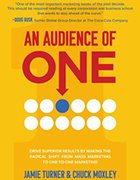How account-based marketing can improve personalization
An ABM strategy can help B2B marketers personalize marketing efforts for top prospects. An ABM strategy includes an ideal customer profile, personalized messaging and a CRM system.
To increase marketing efficiency, many B2B organizations have embraced account-based marketing strategies.
Unlike traditional marketing which targets a mass audience, account-based marketing (ABM) personalizes messaging for individual companies or accounts. B2B vendors can benefit from ABM because they often sell to niche groupings of organizations, according to Jamie Turner and Chuck Moxley in their book, An Audience of One: Drive Superior Results by Making the Radical Shift from Mass Marketing to One-to-One Marketing. An ABM approach lets B2B marketers focus the brunt of their efforts on the customers that are most likely to bring value to their organization.
A successful ABM strategy requires B2B marketers to identify an ideal customer profile (ICP), personalize messaging for important players in the buying process and use a CRM system to track customer data.
Ideal customer profile. Marketers must first identify their ICP, which is the type of business that typically gets the most use out of the organization's product. To identify an ICP, organizations can research their current customers and pick out important characteristics that top customers share, Moxley said.
Organizations can identify ICPs based on factors like number of employees, revenue, industry and geographic location. Once marketing teams identify their organization's ICP criteria, they can research other organizations that meet the criteria and reach out to specific individuals within those organizations.
Personalized messaging. Unlike B2C purchases, which often involve only one person, B2B purchases can involve dozens of people within an organization. Marketers that use ABM should identify individuals within a prospect organization who would likely participate in the buying process and send personalized messages to them.
Because different departments and roles have different business problems, marketers can tailor messaging to appeal to each player's individual needs. For example, an email to an upper-level executive may focus on business outcomes whereas an email to an engineer may focus more on technical problems, Moxley said.
CRM systems. B2B purchase decisions happen over the span of weeks or months and involve many people, so organizations need a CRM system to track interactions. These systems serve as a central repository for customer data and can help marketers score leads based on their organization's ICP criteria.
A CRM can also divide ICPs into tiers -- for instance, tier 1, tier 2 and tier 3, Moxley said. Tier 1 might indicate organizations that can use all a product's features, whereas tier 2 and 3 businesses may only benefit from a few. Therefore, a tier 1 business might merit more personalized messaging than those in the lower tiers. In this way, a CRM system can help ABM marketers track which accounts to prioritize.
To learn more about personalization in B2B marketing, download this free chapter excerpt from An Audience of One's Chapter 14, "Yes, B2B marketers can also be 1:1 marketers."
Editor's note: TechTarget offers ABM and project intelligence data, tools and services.







